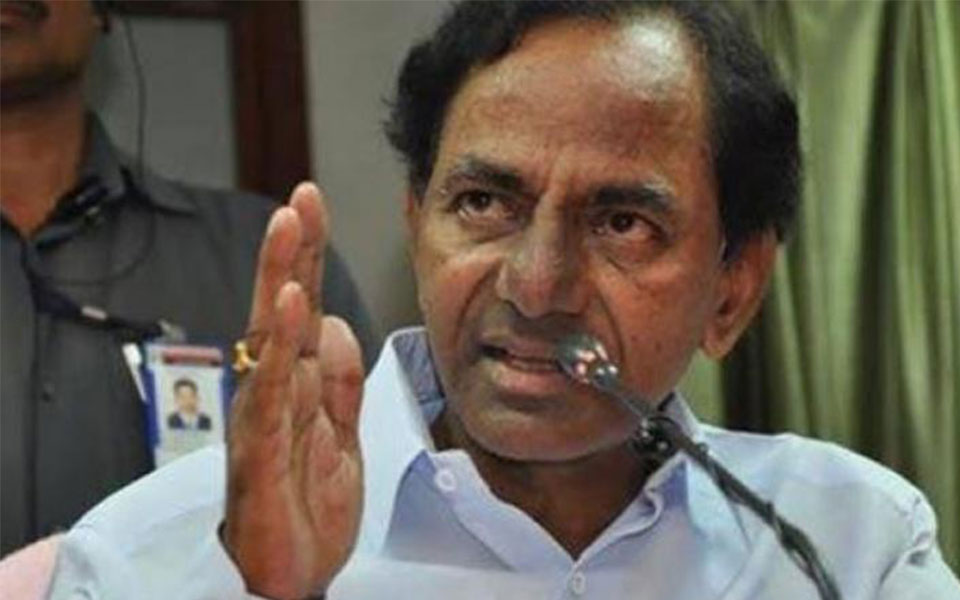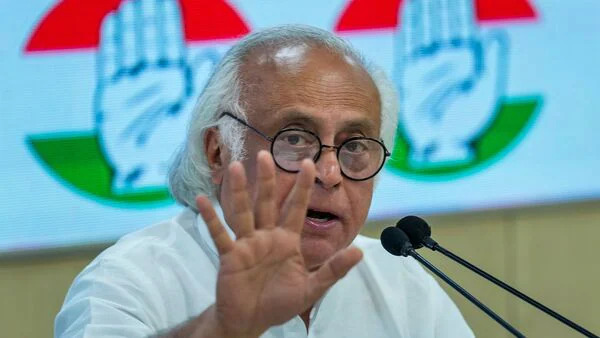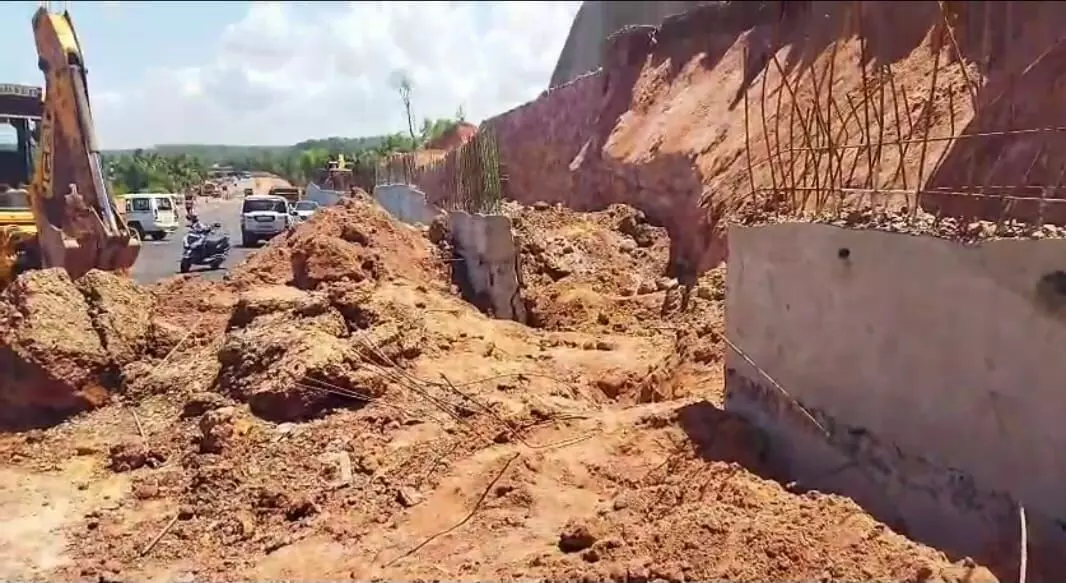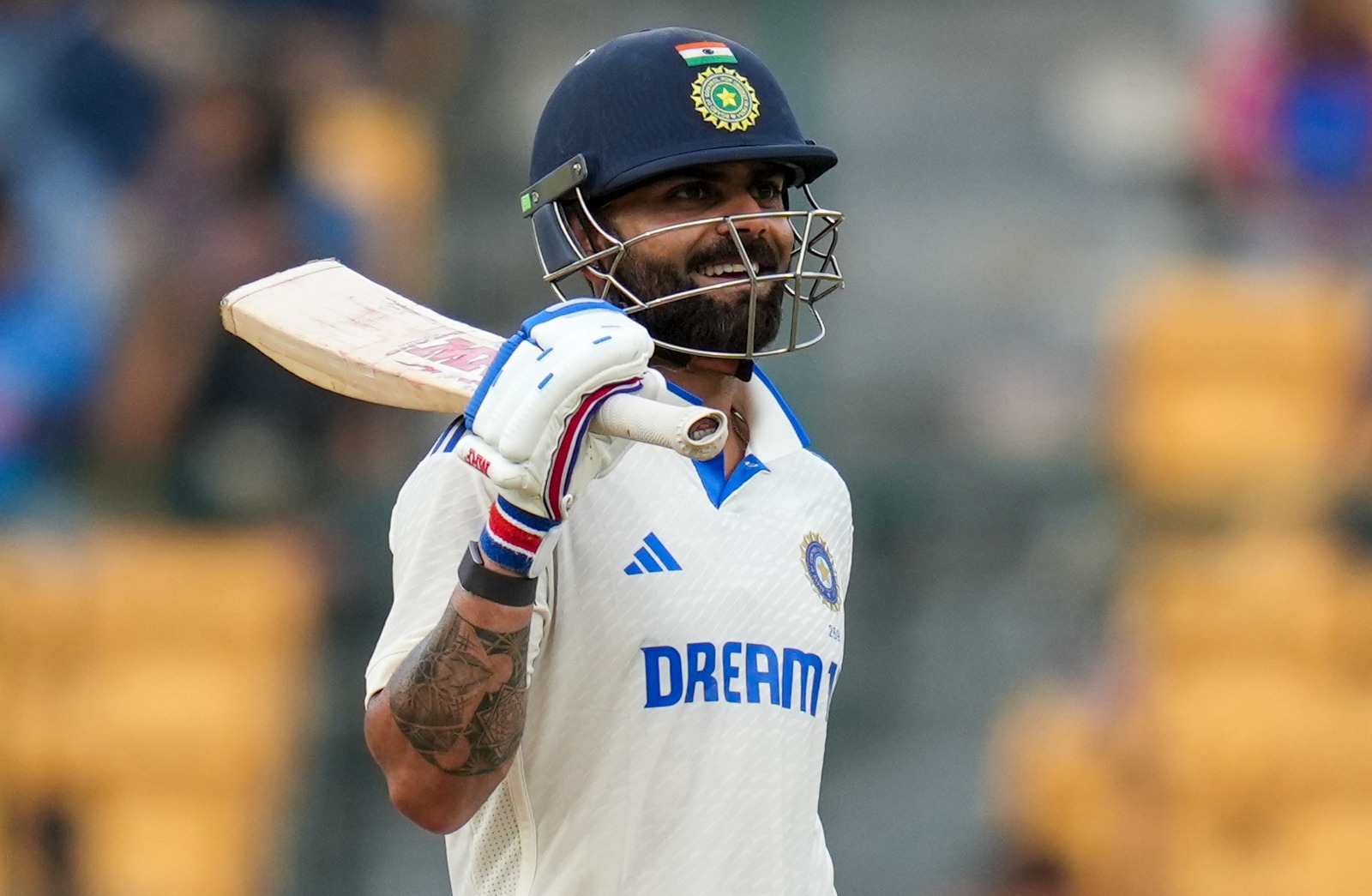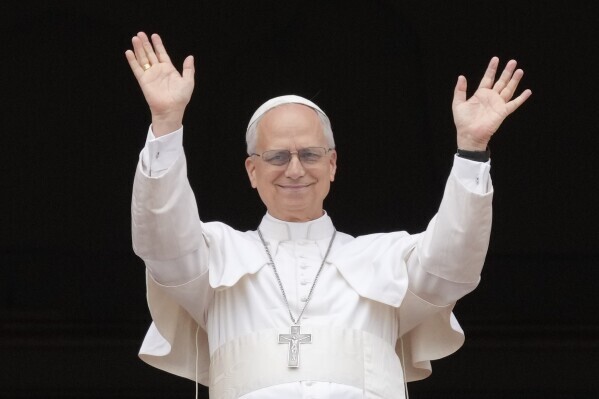Vijayawada, June 28: Telangana Chief Minister K. Chandrasekhar Rao on Thursday offered diamond nose-stud to Goddess Kanakadurga in this Andhra Pradesh city to fulfil his vow.
Rao, who reached the Gannavaram airport in a special aircraft from Hyderabad, was received by Andhra Pradesh Irrigation Minister Devineni Uma Maheswara Rao and other senior officials.
KCR, as Telangana Rashtra Samithi (TRS) chief is popularly known, reached Indrakeeladri by road and offered prayers at the Kanakadurga temple.
Priests accorded traditional welcome to the Chief Minister and others accompanying him. After participating in various rituals, he offered the diamond nose-stud weighing 11.29 grams to the goddess on behalf of the state government.
KCR was accompanied by his wife Shobha Rao, daughter-in-law Shailima, other family members, Home Minister Nayani Narasimha Reddy, Endowments Minister Indrakaran Reddy, Rajya Sabha member K. Keshava Rao and some senior officials. They later returned to Hyderabad.
During the agitation for statehood to Telangana, the TRS chief had vowed to offer gold to some prominent temples if Telangana State was formed.
With Thursday's visit to Vijayawada temple, he has made offerings to five major temples in both the Telugu states since the formation of Telangana State in 2014.
Last year, KCR had visited the famous Tirupati temple and offered jewellery worth about Rs 5.59 crore to Lord Venkateswara Swamy on behalf of the Telangana government.
Earlier, he made similar offerings to Bhadrakali and Veerabhadraswamy temples in Telangana.
Let the Truth be known. If you read VB and like VB, please be a VB Supporter and Help us deliver the Truth to one and all.
New Delhi (PTI): With focus on India's defence arsenal, Congress leader Jairam Ramesh on Monday said the BrahMos missile is a remarkable proof of continuity in governance which simply cannot be denied or erased, "despite it being the regular habit of today's ruling establishment".
Ramesh said the BrahMos missile was inducted into the Indian Navy in 2005 and Indian Army in 2007, while the air-launched variant of BrahMos appeared in 2012, all during Manmohan Singh's tenure.
"It was his leadership that led to the historic Indo-US nuclear agreement of 2005, paving the way for India finally joining the Missile Technology Control Regime eleven years later. It was also during his tenure that the BrahMos Integration Complex in Hyderabad and the Brahmos Aerospace Thiruvananthapuram Limited were established," the Congress general secretary said on X.
"BrahMos is very much in the news these days. It is named after the Brahmaputra and the Moskva rivers and is an outstanding example of Indo-Russian collaboration. It is also yet another remarkable proof of continuity in governance which simply cannot be denied or erased - despite it being the regular habit of today's ruling establishment in New Delhi," he said, taking a swipe at the Modi government.
Noting that India's Integrated Missile Development Programme began in 1983, Ramesh said it has had great successes.
Sometime in the mid-90s, Dr. APJ Abdul Kalam and his colleagues like Dr. Sivathanu Pillai felt the need for collaboration with the Russians for supersonic cruise missiles, he said.
"An inter-governmental agreement was signed on February 12, 1998 when IK Gujral was PM. Incidentally he was India's Ambassador to the USSR 1976-80. Thereafter the first contract was signed on July 9, 1999, when Atal Bihari Vajpayee was PM. The first successful launch took place on June 12, 2001," he said.
The BrahMos headquarters complex that includes design, simulation and aerospace knowledge facilities was inaugurated in New Delhi on December 4, 2004 by Russian President Vladimir Putin, Ramesh said.
"Thereafter the missile was inducted into the Indian Navy in 2005 and Indian Army in 2007. The air-launched variant of BrahMos appeared in 2012. All this was when Dr. Manmohan Singh was PM," he said.
His remarks come days after India and Pakistan reached an understanding to stop all firings and military actions on land, air and sea with immediate effect after four days of cross-border strikes that triggered fears of a wider conflict.

